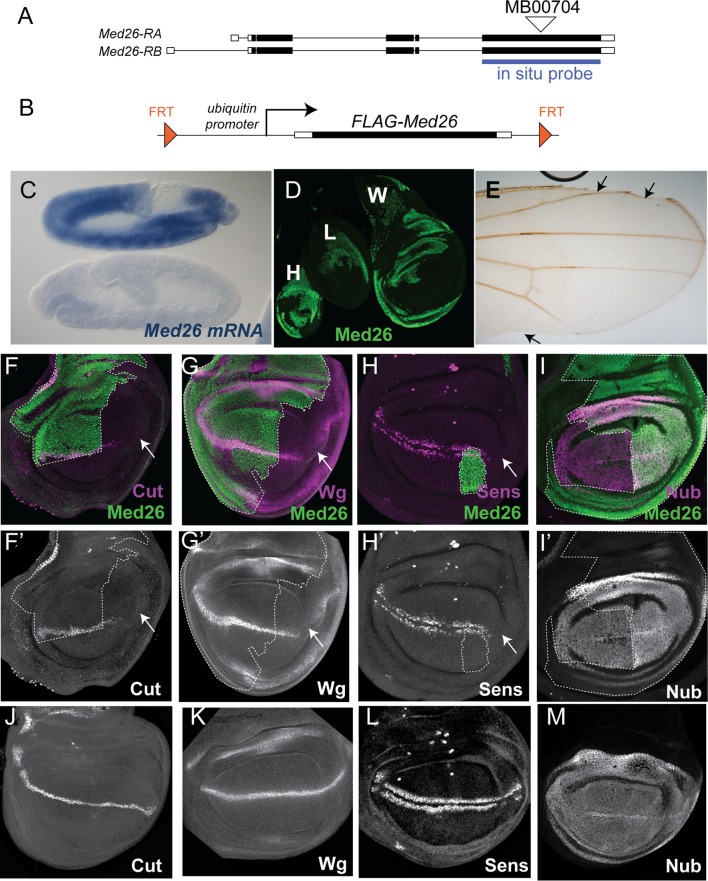FIG 2.
Identification and rescue of a Med26 mutation. (A) Diagram of the Med26 genomic locus. Med26-RA and Med26-RB are two alternatively spliced isoforms; exons are represented by white boxes, coding regions are indicated in black, and introns are shown as lines. The positions of the MB00704 Minos element insertion and of the probe used for in situ hybridization are indicated. (B) Diagram of the FRT Ubi-FLAG-Med26 rescue construct. (C) In situ hybridization with the Med26 probe on two germ band extended embryos derived from a cross of MedMB00704/+ heterozygous parents. The top embryo shows ubiquitous Med26 expression, while the bottom embryo lacks expression and is presumably a homozygous mutant. (D) Haltere (H), leg (L), and wing (W) imaginal discs with Med26MB00704 homozygous clones, stained with anti-Med26 (green). Mutant clones lacking any detectable Med26 staining can grow to a large size. (E) Adult wing in which Med26 mutant clones were induced, showing loss of regions of the wing margin (arrows). (F to M) Third larval instar wing imaginal discs with anterior to the left and dorsal up. Med26 is stained in green. The broken white line outlines the region containing Med26 in panels F, G, H, and I; unstained regions outside this line are homozygous null. Cut (magenta in panel F and white in panels F′ and J) and Wg (magenta in panel G and white in panels G′ and K) are lost from part of the dorsal-ventral boundary in Med26 mutant clones (arrows), but expression is still present in some mutant cells. (J and K) Wild-type imaginal discs. Sens (magenta in panel H and white in panels H′ and L) is still expressed in stripes on either side of the dorsal-ventral boundary despite the loss of Med26. There is some loss of expression on the posterior side of the disc indicated by the arrow. (L) Wild-type imaginal disc for comparison. Nub (magenta in panel I and white in panels I′ and M) shows reduced expression in Med26 mutant cells. Panel M shows a wild-type imaginal disc for comparison.

